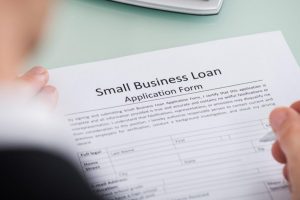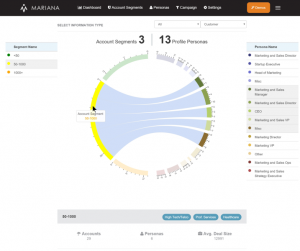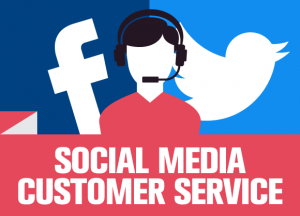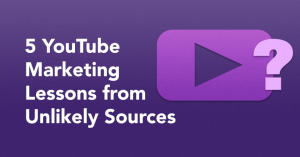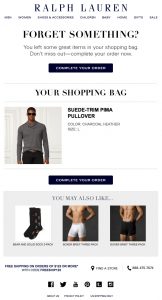Are you looking for a way to make more money with your online store? If so, you may want to consider the world of wholesale marketing. Essentially, wholesale marketing is when you sell your products to other businesses, usually for resale purposes.
You can make new business connections, dramatically improve your sales, and create a brand new revenue stream for your business, all through wholesale marketing. It’s also possible to use this opportunity to find your way into new markets and get more consumers interested in your brand.
If you have a relatively small B2C storefront, you can see rapid growth by connecting to a well-known wholesale client. Imagine if one of the big box stores like Walmart started selling your goods. Now, think about how many of those customers would eventually make it back to your website for future orders.
As you can see, this type of marketing is an excellent way to grow your business from both a B2B and B2C marketing perspective. Today, we will give you some of your best advice to get more wholesale customers and grow your business.
Determine Your Pricing Plan
The one catch to selling products in bulk is you need to lower your prices so businesses will see a reason to stock up. If you’re offering one item at a flat rate of $ 20, the price for 100 or 1000 of those products needs to be dramatically lower to incentivize larger purchases.
You have to look at your finances, determine the cost of making each product, and figure out how much you can lower the price and still profit. So, if your $ 20 product costs $ 8 to create, you may want to reduce the wholesale price down to about $ 11. Ultimately, the choice is yours.
We suggest creating a tier system where wholesale customers can get a larger discount depending on the size of their order. You can use this strategy to encourage clients to buy in bulk to save money and increase their profit margin.
If you’re not sure what these customers are willing to pay, you can check competitor pricing or split test different promotions to your wholesale audience. It may take time to find your footing when working on your pricing structure, but it’s a crucial step in the wholesale marketing process.
Segment Your Wholesale Audience
Now that you have your pricing figured out, it’s time to start generating leads. Getting wholesale customers interested in your brand is a little bit different than marketing to individuals.
Wholesale customers tend to involve more questions and interactions. The people behind the business want to make sure they are making a smart investment, so the process is slower. You’ll want to spend more time nurturing leads and giving them reasons to trust your company.
Additionally, these customers tend to have different pain points and goals when compared to your B2C audience. You’ll need to create appropriate marketing material for customers that buy in bulk.
After you segment your wholesale customers, you should break down those customers into different groups depending on their individual needs. Segmenting your audience ensures that you can deliver specific solutions, content, and offers to people based on their needs. It also improves engagement, with segmented emails seeing twice as many opens when compared to blast emails.
You can segment your audience when they subscribe to your email list or by simply asking for their preferences in your welcome email. Use this information to craft personalized messages and promotions for your wholesale customers.
Use a Responsive Website Design
Marketing to wholesale customers means you have to put special pricing and promotions up for these users. The last thing you want to do is confuse the average B2C customer that visits your website by showing multiple pricing charts and other unnecessary information.
We recommend using a responsive web design that changes based on who is logged in to your site. So, if a wholesale client visits your website, they can see their orders, accurate pricing, and unique promotions based on their order history and account status.
You can use a tool like Wholesale Suite to add some of these features to your website, but you’ll need to make other adjustments on your end too. For instance, you’ll need to make sure your website is mobile-friendly. If a customer is browsing your site from their smartphone, they expect lightning-fast loading times and a user-friendly design.
A responsive design boils down to ease of access and personalization. If you can merge these two elements into your online store, you’ll have a much better chance of converting both B2B and B2C customers.
Streamline the Checkout Process
Finally, let’s talk about streamlining the checkout process. You don’t want your wholesale customers to abandon their shopping cart before completing a large order. Simplifying your checkout page is an excellent way to keep people on-site.
When you create an order form, keep it as straightforward as possible. You can use a form builder with conditional logic, which allows you to hide and show questions to simplify forms. Use this opportunity to gather more information about your customers, but make the questions optional, so they are not immediately visible to every visitor.
It’s also a good idea to remove unnecessary links from your sidebars and headers. If all the user can see is the form in front of them, they are less likely to get distracted and leave the checkout process.
You can add small elements of social proof to encourage more submissions. We like including reviews and trust badges on our checkout page because they help show that we are trustworthy with our products and customers’ information.
Simply adding a review to your checkout page can boost conversions by a whopping 270%. This is especially helpful if you’re trying to convert customers that are ready to make large orders. When these people see other wholesale customers having a good experience with your business, they are more likely to complete their order.
Final Thoughts
It’s clear that B2B marketing will continue to provide B2Cs with an additional revenue stream for years to come. If your product has a significant enough demand, you can sell physical goods and services to other businesses for a quick profit and more potential long-term clients.
Business & Finance Articles on Business 2 Community
(14)

